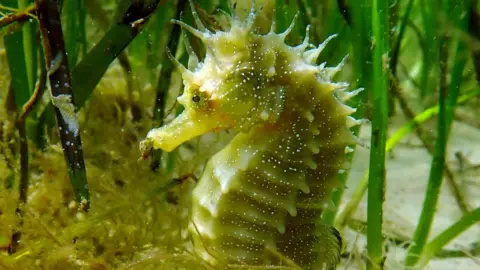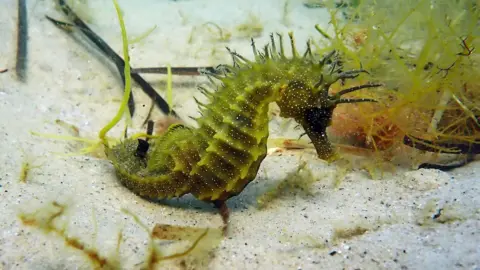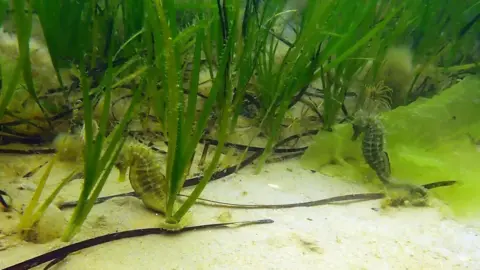Rare seahorse numbers reach post-pandemic high
 The Seahorse Trust
The Seahorse TrustConservationists working to protect a population of seahorses off the Dorset coast have counted the highest number of the creatures since the Covid pandemic.
The absence of boats and people in Studland Bay during lockdown meant seahorse numbers peaked in 2020 but quickly diminished when restrictions were eased.
Volunteers regularly monitor the habitat to assess the impact of eco-moorings, which have been installed to stop boat anchors damaging the seagrass habitat.
The Seahorse Trust said the latest survey had recorded 17 of the creatures on the seabed.
 The Seahorse Trust
The Seahorse TrustNeil Garrick-Maidment of the Seahorse Trust said: "It is fantastic news that we found so many.
"Half were males and most of them were pregnant, so it shows the eco-moorings are working.
"There is still a long way to go in protecting this amazing site, and the seahorses on it, but we are going in the right direction."
Seahorses are legally protected by law, and anyone looking for them - either snorkelling or diving - requires a licence.
Immediately after the Covid lockdown, one official dive counted 21 seahorses.
 The Seahorse Trust
The Seahorse TrustMr Garrick-Maidment said: "We worked out that the site was holding 46 seahorses then but sadly, within weeks of lockdown unlocking, the seahorses were gone."
The eco-moorings installed by the Seahorse Trust, Boatfolk and the Studland Bay Marine Partnership cost about £100,000 a year to maintain.
Boat users pay £7.50 to moor there for four hours, or £15 for 24 hours, or £150 for a seasonal pass. There is also an option to pay more to help support the conservation work.
The trust is also appealing for donations to install more moorings.
You can follow BBC Dorset on Facebook, X (Twitter), or Instagram.
